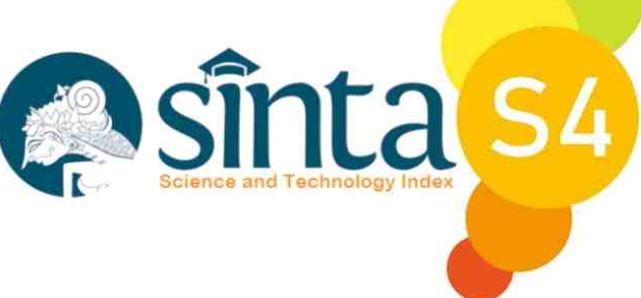PENGARUH LEADER MEMBER EXCHANGE (LMX) DAN SENSE OF POWER TERHADAP VOICE BEHAVIOR
 ),
), (1) Universitas Sanata Dharma
 Corresponding Author
Corresponding Author
Copyright (c) 2022 Minta Istono
DOI : https://doi.org/10.24036/rapun.v13i1.111092
Full Text:
 Language : en
Language : en
Abstract
Keywords
References
Anderson, C., & Berdahl, J. L. (2002). The experience of power: Examining the effects of power on approach and inhibition tendencies. Journal of Personality and Social Psychology, 83, 1362–1377.
Anderson, C., John, O.P. & Keltner, D. (2012). The personal sense of power. Journal of Personality, 80(2).
Anderson, C., & Galinsky, A. D. 2006. Power, optimism, and risk-taking. European Journal of Social Psychology, 36(4): 511-536.
Ashford, S. J., Sutcliffe, K. M., & Christianson, M. K. (2009). Speaking up and speaking out: The leadership dynamics of voice in organizations. In Greenberg, J & Edwards. M. S. (Eds). Voice and silence in organizations, 175-202. Emerald Group Publishing Limited
Botero, I.C., & Van Dyne, L. (2009). Employee voice behavior: Interactive effect of LMX and power distance in the United States and Columbia. Management Communication Quarterly, 23(1), 84-104.
Cropanzano, R., & Mitchell, M. S. (2005). Social exchange theory: An interdisciplinary review. Journal of management, 31(6), 874-900.
Detert, J., & Burris, E. (2007). Leadership behavior and employee voice: Is the door really open? The Academy of Management Journal, 50(4), 869-884.
Detert, J. R., Burris, E. R., Harrison, D. A., & Martin, S.R. (2013). Voice Flows to and around Leaders_Understanding When Units Are Helped or Hurt by Employee Voice. Administrative Science Quarterly, Vol. 58, (4). 624-668
Edmondson, A. C. (2003). Speaking up in the operating room: How team leaders promote learning in interdisciplinary action teams. Journal of Management Studies, 40, 1419–1452.
Gerstner, C. R., & Day, D. V. (1997). Meta-analytic review of leader–member exchange theory: Correlates and construct issues. Journal of Applied Psychology, 82(6), 827-844. doi:http://dx.doi.org/10.1037/0021-9010.82.6.827
Graen, G. B., & Scandura, T. A. (1987). Toward a psychology of dyadic organizing. Research in Organizational Behavior, 9, 175-208.
Hsiung, H. (2012). Authentic leadership and employee voice behavior: A multi-level psychological process. Journal of Business Ethics, 107(3), 349-36.
Keltner, D., Gruenfeld, D. H, & Anderson, C. (2003). Power, approach, and inhibition. Psychological Review, 110, 265–284.
Liden, R. C, Sparrowe, R. T., & Wayne, S. J. (1997). Leader member exchange theory: The past and potential for the future. In G. R. Ferris (Ed.), Besearch in personnel and human resource management, vol. 15:47 119. Greenwich, CT: JAI Pre
Loi, R., Mao, Y., & Ngo, H. Y. (2009). Linking leader–member exchange and employee work outcomes: The mediating role organizational social and economic exchange. Management and Organization Review, 5, 401–422.
Morisson, E.W. (2014). Employee voice and silence. The Annual Review of Organizational Psychology and Organizational Behavior, 1, 173-197..
Morisson, E.W., & Milliken, F.J. (2000). Organizational silence: A barrier to change and development in a pluralistic world. The Academy of Management Review, 25(4), 706-725.
Morisson, E.W., See, K. E., & Caitlin, P. (2015). An approach-inhibition model of employee silence: The joint effects of personal sense of power and target openness. Personnel Psychology, 68, 547–580.
Sparrowe, R. T., & Liden, R. C. (2005). Two routes to influence: Integrating leader–member exchange and social network perspectives. Administrative Science Quarterly, 50, 505–535. doi:10.2189/asqu.50.4.505
Van Dyne, L., Ang, S., & Botero, I.C. (2003). Conceptualizing employee silence and employee voice as multidimensional constructs. Journal of Management Studies, 40(6), 1359-1392.
Van Dyne, L., & LePine, J. (1998). Helping and Voice Extra-Role Behaviors: Evidence of Construct and Predictive Validity. The Academy of Management Journal, 41(1), 108-119.
Van Dyne, L., Graham, J., & Dienesch, R. (1994). Organizational Citizenship Behavior: Construct Redefinition, Measurement, and Validation. The Academy of Management Journal, 37(4), 765-802.
Van Dyne, L., Kamdar, D., & Joireman, J. (2008). In-role perceptions buffer the negative impact of low LMX on helping and enhance the positive impact of high LMX on voice. Journal of Applied Psychology, 93(6), 1195-1207.
 Article Metrics
Article Metrics
 Abstract Views : 523 times
Abstract Views : 523 times
 PDF Downloaded : 424 times
PDF Downloaded : 424 times
Refbacks
- There are currently no refbacks.
Copyright (c) 2022 Minta Istono

This work is licensed under a Creative Commons Attribution-NonCommercial 4.0 International License.






